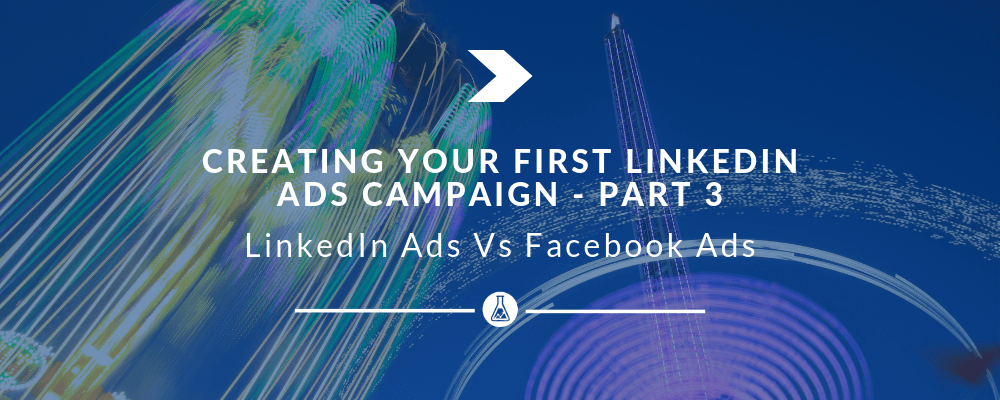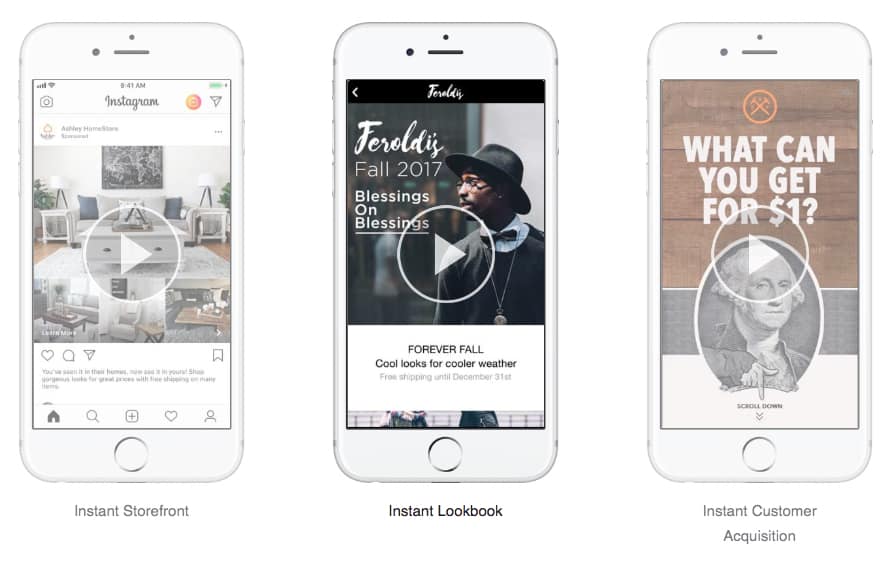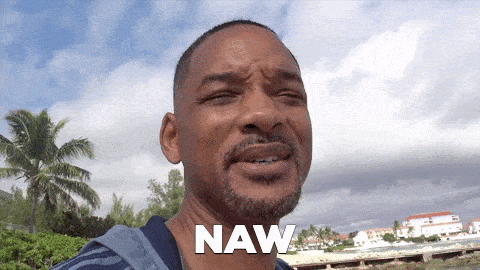You’re reading the third installment of our series on LinkedIn ads — in this post, we discuss the differences between LinkedIn Ads vs Facebook Ads, and talk about the pros and cons that each ad platform brings to the table.
If you haven’t seen the other posts in our series, here are the links so you can check them out:
- Creating Your First LinkedIn Ads Campaign – Part 1: The Low-Down On LinkedIn Ad Formats
- Creating Your First LinkedIn Ads Campaign – Part 2: How To Set Up Your Ads (+ LinkedIn Ads Best Practices)
Alright, let’s get started!
LinkedIn Ads vs Facebook Ads: which should you use?
When looking at LinkedIn and Facebook, it’s obvious that these cater to different audiences.
Here’s a quick recap from our first post on LinkedIn ads:
- 61 million of LinkedIn’s 500 million members are senior level influencers, and 40 million are in decision-making positions.
- Most LinkedIn users work at large-scale firms instead of start-ups and Small and Medium Enterprises (SMEs), and
- There are a high proportion of LinkedIn users in the Finance, Medical, Educational, High Tech, and Manufacturing industries.
Simply put, LinkedIn is used predominantly by business professionals, and these folks log into LinkedIn to discover new business opportunities, network with their contacts, and improve their knowledge and skill sets.
On the other hand however, Facebook is an entirely different beast. Here are some statistics:
- Facebook has over 2.2 billion active users.
- Facebook is the world’s third-most visited website (the first two being Google and YouTube).
- 68% of Americans use Facebook, but only 10% of Facebook users are American.
Basically, Facebook is the “default” social media platform that everyone (including your best friend, their unborn child, and your grandmother) is on.
These people typically use Facebook for entertainment (gotta love those funny dog videos) and to keep in touch with their friends and family.
LinkedIn Ads vs Facebook Ads: which is more expensive?
If you do a quick Google search, you’ll find that the average Cost Per Click (CPC) for LinkedIn ads is $5.26, and the same cost for Facebook ads is $1.72.
Does that mean that LinkedIn ads are more expensive (and therefore less profitable) than Facebook ads?
Not quite. If the traffic you get from your LinkedIn ads are more targeted, and convert better than that of your Facebook ads, you might find that LinkedIn works out to be more cost-effective.
It’s also wise to consider the product or service you’re selling here. For example, say you’re promoting your consulting agency on LinkedIn, and your average deal size is $5,000. Even if your CPC runs up to $10 or $20, you could still make a sizeable profit on each transaction.
But, if you own an eCommerce store selling novelty gifts and your Average Order Value is $10, it’s a different story. Even if your Facebook ads cost you $2 per click on average, this could significantly eat into your profit margins.
LinkedIn Ads: Pros and Cons
In this section, we’ll look at the advantages and disadvantages of LinkedIn ads, and discuss how these affect how you might run your ad campaign.
The two major advantages that LinkedIn brings to the table are:
- Highly precise targeting for B2B audiences
- An easy to use dashboard and interface
Pros
First up, LinkedIn allows advertisers to target their ads with laser-like precision. In addition to basic demographic targeting (age, gender, location), you can also set up your LinkedIn ads to target audiences based on:
- Schools attended
- Current employer
- Previous employer(s)
- Job title
- Industry
- Company size
- LinkedIn groups joined
- Keywords used in profile, title, company or school
If you want to target someone who went to Harvard Business School, previously worked at Facebook, and is currently employed at Google, you can do that with LinkedIn.
Likewise, if you want to target someone who graduated from Michigan State, and currently works as a marketing manager or director in a pharmaceutical company, you can do that too.
Pretty amazing, huh?
Another key benefit of LinkedIn is that it’s easy to set up and use your ad account.
Creating a Campaign Manager account on LinkedIn takes all of ten seconds. Once you’re done, you’ll enter your billing details, and then you can start running those ads.
Cons
On the other hand, here are some things that aren’t so great about LinkedIn:
- It’s largely irrelevant for B2C companies
- There are limited ad formats to choose from
First and foremost, if you’re not a B2B company, then there’s a 99% chance that you’ll find more success on Facebook (or even Google Ads) as opposed to LinkedIn.
Additionally, there’s also the fact that LinkedIn offers fewer ad formats than other ad platforms.
On the bright side, LinkedIn has added new ad formats over the past few years — they pushed out their Lead Gen Forms back in 2017, and started offering video ads just last year.
That said, it’s still trailing behind the likes of Facebook, which has tons of innovative ad formats (we’ll get to these in a bit).
Facebook Ads: Pros and Cons
Pros
The three major advantages that you get with Facebook ads are:
- It offers highly precise targeting for the mass market
- There are more ad types to choose from
- It’s a much better fit for B2C companies
First up, Facebook offers tons of targeting options that allow you to zero in on your ideal customer. For instance, you can target based on:
- General interests (e.g. Sports)
- Brands that users are interested in (e.g. Nike)
- Pages that users have Liked (e.g. a fitness influencer’s Facebook page)
- Birthdays (e.g. users who have upcoming birthdays)
- Friends’ birthdays (e.g. users who have friends with upcoming birthdays, and might want to buy gifts for them)
Furthermore, you can also retarget folks who have visited your website or signed up for your mailing list (LinkedIn offers this option as well).
Choose From Different Ad Types
Next, Facebook also gives you plenty of ad types and formats to choose from, including:
- Photo
- Video
- Carousel
- Instant Experience
- Stories
- Messenger
One of the more innovative ad types here is Instant Experience; this basically opens up a full-screen landing page to engage your customer.
As Facebook puts it, with an Instant Experience, you can allow your customers to “watch engaging videos and photos, swipe through carousels, tilt to pan and explore lifestyle images with tagged products – all in a single ad.”
These ads are specifically designed for mobile, and they load up to fifteen times faster than standard mobile web (this will almost definitely have an impact on your conversion rate).
The bottom line? Facebook offers more ad formats that you can customize to suit your needs; if you create an ad campaign on Facebook, the sky’s really the limit.
Cons
That’s not to say that Facebook is perfect, though. There are also some things that we don’t particularly like about Facebook ads, including:
- Targeting B2B audiences is less effective on Facebook
- There’s a steeper learning curve
First up, if you’re looking to reach out to a B2B audience, LinkedIn is still the advertising platform of choice.
To be fair, Facebook does allow you to target consumers based on job-related factors, including:
- Education level
- Field of study
- Schools attended
- Industry
- Job title
- Employer
But here’s the thing — like we discussed earlier, people create Facebook accounts in order to watch dog videos and keep in touch with their friends and family, NOT to professionally network.
Factor in all the privacy leaks and scares that we’ve had in the past few years, and we can safely assume that many B2B professionals would think twice about disclosing all their personal information on their Facebook profile.
Privacy and Targeting
While they might state what industry they’re from, they might steer clear from putting the name of their company on their profile.
Obviously, this makes things tough when it comes to targeting. You have the option to target based on these criteria, but you might be getting access to a highly limited pool of Facebook users (because 99% of them aren’t sharing the relevant information on their profile).
Moving on, another disadvantage of Facebook ads is that it involves more complexity, and it’s less beginner-friendly.
First up, you’ll have to get acquainted with Facebook Business Manager, which isn’t easy to use. (There are hundreds of lengthy online guides that teach you how to use this tool — this pretty much says it all).
At the same time, because there are so many ad formats available on Facebook, this can make the process of setting up your first ad campaign more confusing and complex.
A Final Word on LinkedIn Ads vs Facebook Ads
So… Facebook Ads vs LinkedIn Ads — which is better?
At the end of the day, your choice really depends on the audience you’re trying to reach out to (and the ads you want to run).
What if it seems as though your audience MIGHT use both platforms? Well, in that case, your best bet is to create ad campaigns on both LinkedIn and Facebook, and see which gives you the best results.
Those case studies you read online might provide you with a handy frame of reference, but remember that your results will always vary based on your industry and product.
So get in there, and start testing things out yourself!






